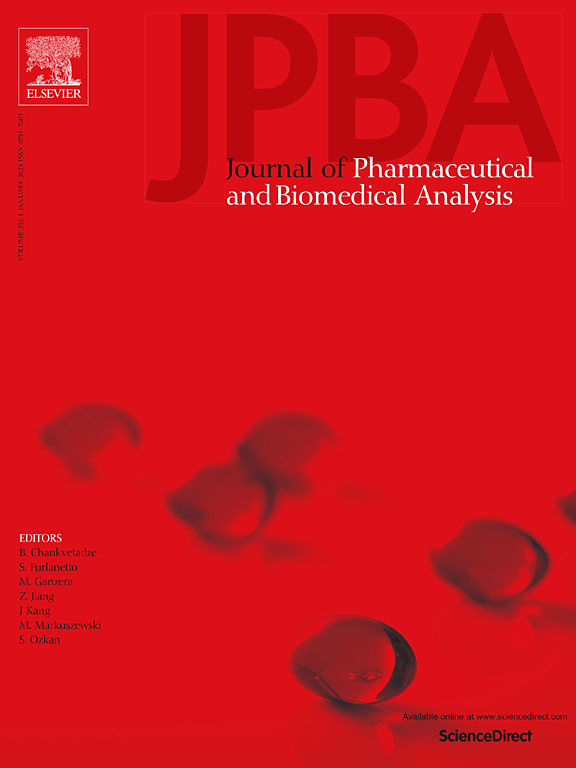Salting-out assisted liquid-liquid extraction (SALLE): Principle, optimization, and applications in blood sample analysis
IF 3.1
3区 医学
Q2 CHEMISTRY, ANALYTICAL
Journal of pharmaceutical and biomedical analysis
Pub Date : 2025-01-31
DOI:10.1016/j.jpba.2025.116720
引用次数: 0
Abstract
This review focuses on the use of Salting-Out Assisted Liquid-Liquid Extraction (SALLE) for blood sample processing prior analysis, exploring its principles, optimization parameters, and coupling with analytical techniques. SALLE is favored for its simplicity, cost-effectiveness, and rapid execution using the salting-out effect to induce phase separation in mixtures of aqueous samples and water-miscible organic solvents. The review categorizes and discusses the different types of blood samples, the main salts and solvents used, and the parameters affecting the extraction efficiency, such as solvent and salt type as well as ionic strength, pH, vortex mixing and centrifugation time. Advantages of SALLE over traditional methods like solid-phase extraction (SPE) and protein precipitation (PP) are highlighted, emphasizing its environmental friendliness, high extraction efficiency, and ease of automation. By examining recent literature and scientific publications (2014–2024), this review provides a comprehensive understanding of the factors influencing SALLE performance and its application in bioanalysis, particularly when coupled with separative techniques such as liquid chromatography (LC), capillary electrophoresis (CE), and mass spectrometry (MS).
求助全文
约1分钟内获得全文
求助全文
来源期刊
CiteScore
6.70
自引率
5.90%
发文量
588
审稿时长
37 days
期刊介绍:
This journal is an international medium directed towards the needs of academic, clinical, government and industrial analysis by publishing original research reports and critical reviews on pharmaceutical and biomedical analysis. It covers the interdisciplinary aspects of analysis in the pharmaceutical, biomedical and clinical sciences, including developments in analytical methodology, instrumentation, computation and interpretation. Submissions on novel applications focusing on drug purity and stability studies, pharmacokinetics, therapeutic monitoring, metabolic profiling; drug-related aspects of analytical biochemistry and forensic toxicology; quality assurance in the pharmaceutical industry are also welcome.
Studies from areas of well established and poorly selective methods, such as UV-VIS spectrophotometry (including derivative and multi-wavelength measurements), basic electroanalytical (potentiometric, polarographic and voltammetric) methods, fluorimetry, flow-injection analysis, etc. are accepted for publication in exceptional cases only, if a unique and substantial advantage over presently known systems is demonstrated. The same applies to the assay of simple drug formulations by any kind of methods and the determination of drugs in biological samples based merely on spiked samples. Drug purity/stability studies should contain information on the structure elucidation of the impurities/degradants.

 求助内容:
求助内容: 应助结果提醒方式:
应助结果提醒方式:


